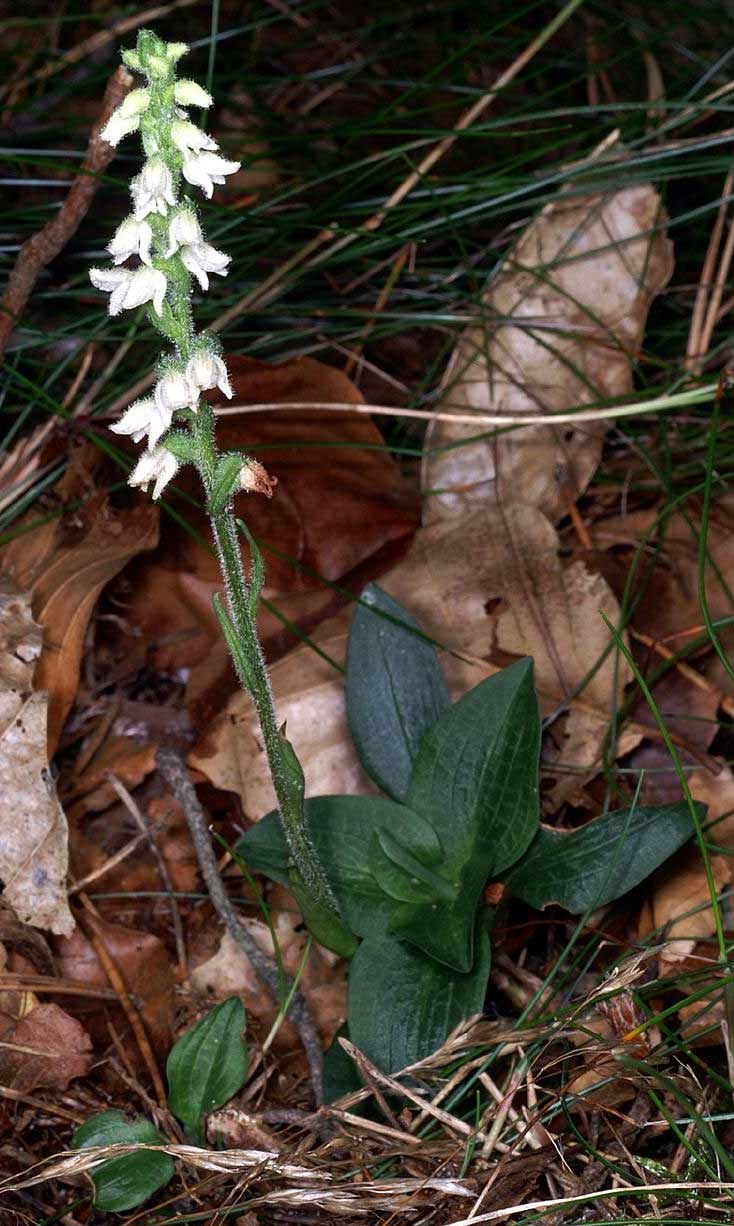Goodyera repens (*) Cladus: Eukaryota Name Goodyera repens (L.) R. Br. Vernacular names Goodyera repens, an orchid in the genus Goodyera, is called by the common name creeping lady's tresses in Anglophone Europe and dwarf rattlesnake plantain or lesser rattlesnake plantain in North America. It is a green underground creeper that sends out occasional skinny stems above the surface. During the summer, these stems bear flowers arranged in a spiral. These flowers twist themselves to face toward the sun. Goodyera repens is found in isolated spots in the forests and bogs of Europe. It is a rare plant, but it is the most common orchid in Scandinavia. It is also found in Canada and the northern United States. This is a protected species throughout most of its range. It does not survive fire, and does not soon reenter an area after fire or logging. It is generally found only in forests at least 95 years old.[1] Like other orchids, the creeping lady's tresses live in symbiosis with a mycorrhiza, a rhizome-dwelling fungus (Ceratobasidium cornigerum or Rhizoctonia goodyearae-repentis). The mycorrhiza helps the orchid absorb and assimilate nutrients This orchid is pollinated by bumblebees, allowing for its sexual reproduction. It can also reproduce vegetatively. The seeds are probably the smallest of any plant. References 1. ^ Williams, T. Y. (1990). "Goodyera repens". Fire Effects Information System. U.S. Department of Agriculture, Forest Service, Rocky Mountain Research Station, Fire Sciences Laboratory. http://www.fs.fed.us/database/feis/plants/forb/goorep/all.html. Retrieved 2008-08-06. Source: Wikipedia, Wikispecies: All text is available under the terms of the GNU Free Documentation License |
|

